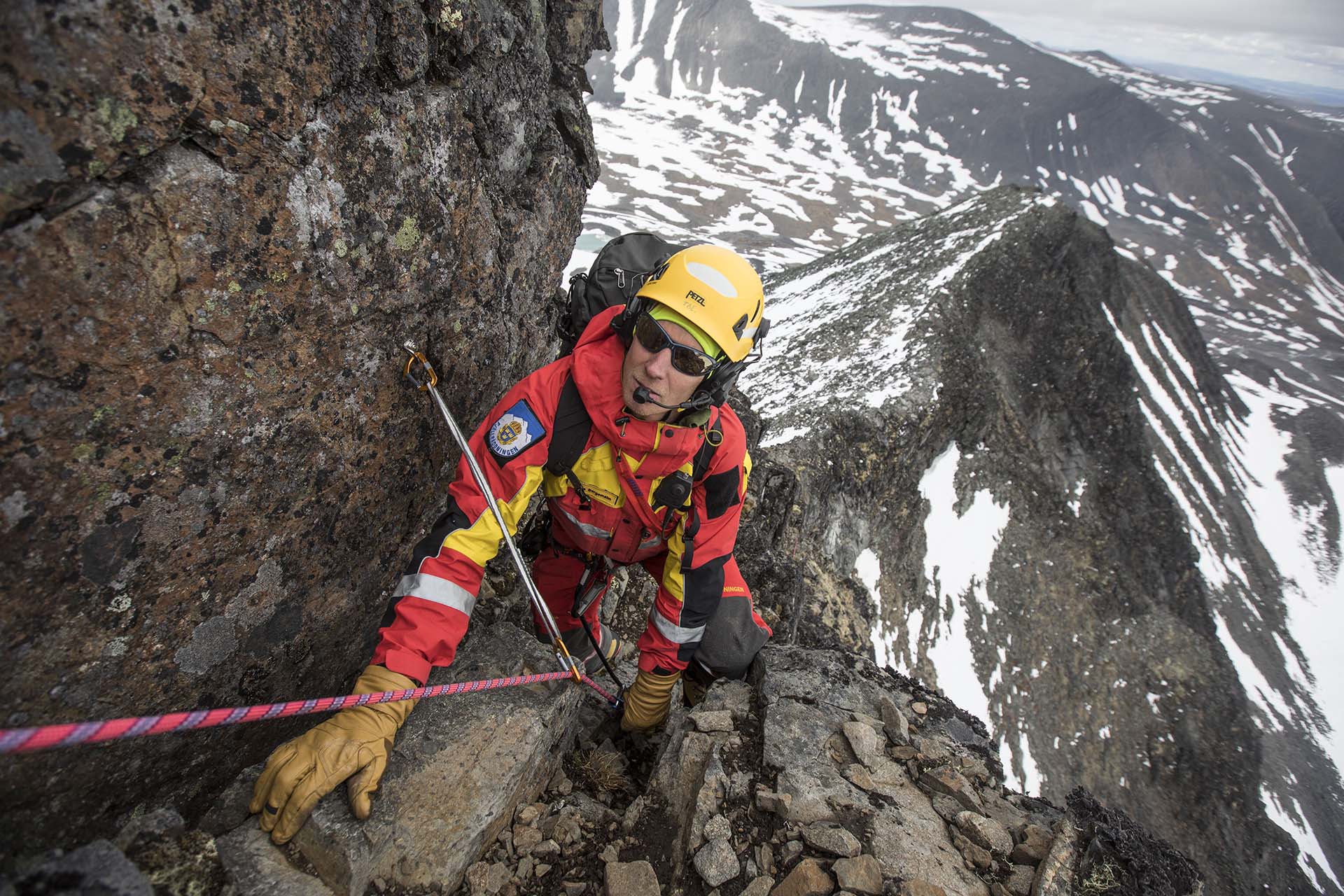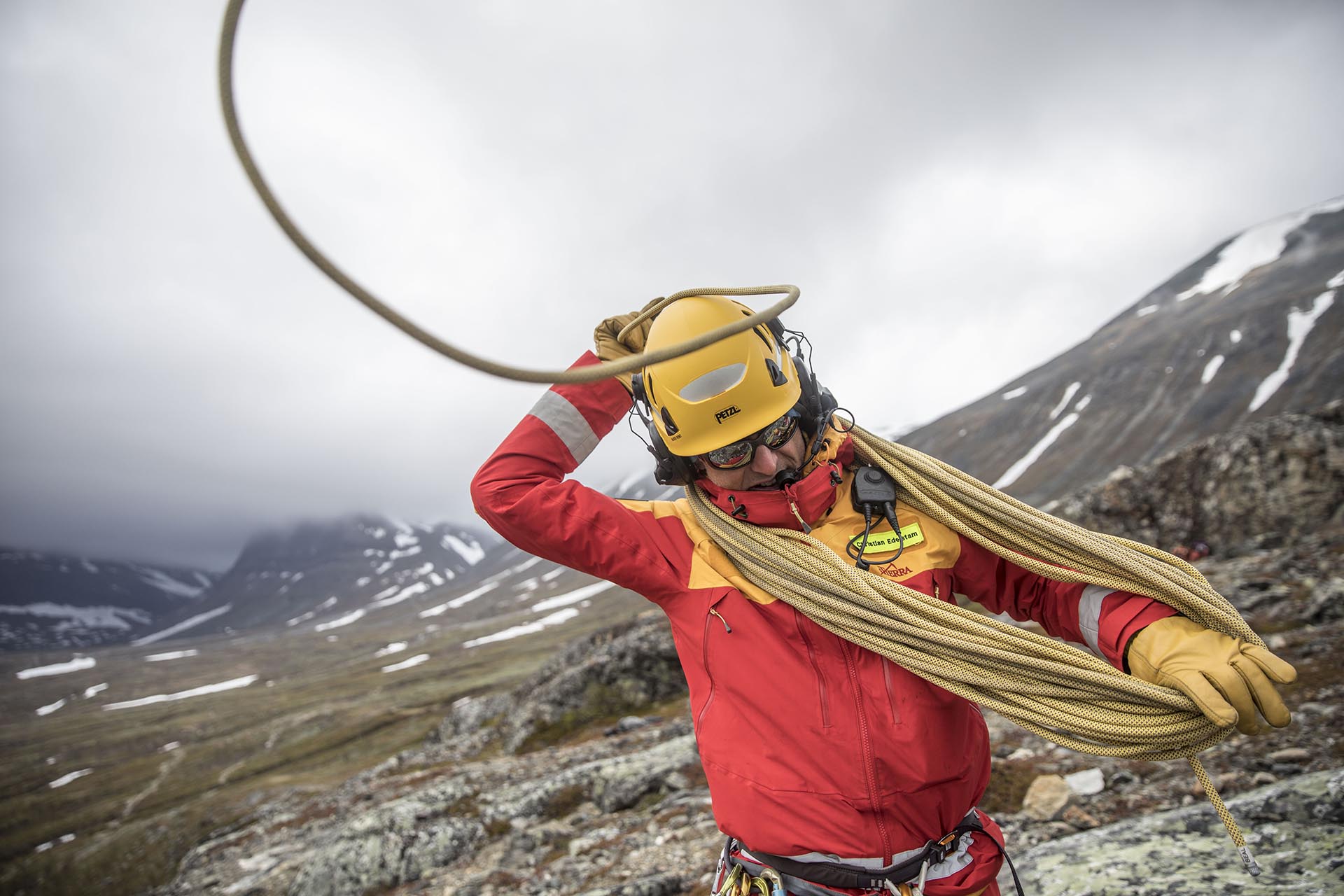Professional users
The Swedish Alpine Mountain Rescue is one of many professional organisations that use clothing from Tierra in their daily work. Their job is to quickly assemble a team and when there is an emergency in mountain terrain. Working in an environment where weather conditions can be extreme and change at a moments notice, clothing quickly becomes a matter of safety. The alpine section of mountain rescue mainly works on situations in alpine and steeper environments. Tierra is a proud supplier of their work wear.

This is the alpine mountain rescue
As alpine activity increased in the Swedish mountains in the late 1960s, there was a need for a rescue organisation that could handle the special challenges that come with steep terrain. In 1969, the Alpine rescue service was formed. Its main task is to help people that have been injured and people in distress in alpine terrain. Alpine terrain means rock walls, ridges, scree slopes, other steep mountain terrain and glaciers. The group is also deployed when searching in avalanche terrain. In Sweden, there are alpine mountain rescue groups in Östersund, Kiruna and Hemavan and they operate all over the Swedish mountain range.
The Alpine Mountain Rescue serves under the Police and Mountain Rescue command, and all members have regular jobs. When the alarm goes off, each member gets a message on their phone to which they have to respond whether they have the opportunity to go or not. A minimum of four people are required for a rescue operation.
They gather at a central location where they pack up the equipment that is expected to be required in order to complete the mission; stretchers, medical equipment, ropes, fuses and overnight equipment and more.
If possible, they wait for the police helicopter. The police helicopter has a winch, but sometimes private helicopters are also used where a winch is missing. If the weather does not allow the rescue team to fly all the way, they often have to walk the last bit, which is often both long, heavy and demanding.
The requirements for serving in the alpine mountain rescue are high, both in terms of physics and knowledge. In addition to the usual mountain rescue training, you are required to be a good alpinist and have very good local knowledge of the area yin which you will be operating. The latter means, among other things, that you must have climbed the classic alpine climbing routes where you can be expected to carry out rescue missions. In order to be winched, special training is required, and you need to be winched at least every 90 days in order to keep the winch license.

In a typical year, the alpine mountain rescue receives 10-30 alarms. Most of them in the summertime.
- The most common alarm, by far, for the Kiruna group, I would say, is a hiker on the western route on Kebnekaise, says Jenny Råghall, Sweden’s only female alpine mountain rescuer.
The alarm usually comes in at 3pm on a day that started with good weather that later turned bad. It doesn’t have to be a serious accident - a sprained foot is enough for you not to be able to get down on your own in the demanding block terrain. If the weather allows for a helicopter, it’s a fairly straight forward mission to pick up the people in distress. In reality the weather is often bad and then we are dropped off at the start of the western trail and then have to walk up. Sometimes we wait for flying weather, but often we must walk down with the injured person or carry them on a stretcher if it’s really bad. Carrying a stretcher is incredibly difficult and demanding in that terrain, Jenny continues. Sometimes those who have raised the alarm will need to spend the night in the top cabin at Kebnekaise and wait for rescue, provided they have enough food and clothing.
Why did you choose to become an alpine mountain rescuer?
- I do this because I’m passionate about helping people and being able to do it in an environment that can be scary for the person affected, but comfortable for those of us who are used to it. It’s about turning a frightening experience into something positive as best as possible, concludes Jenny.
More professional users and organizations
Besides the alpine mountain rescue, several other organisations and professionals trust Tierra’s clothes in their daily work. The list can be made long, but to name a few: The Swedish Accident Investigation Authority, Kebnekaise Fjällstation, several units within the rescue service and police, Åre Lavincenter and others. Tierra is also worn by several certified mountain guides and not least by Chhiring Dorje Sherpa who climbed Mount Everest no less than 16 times.
